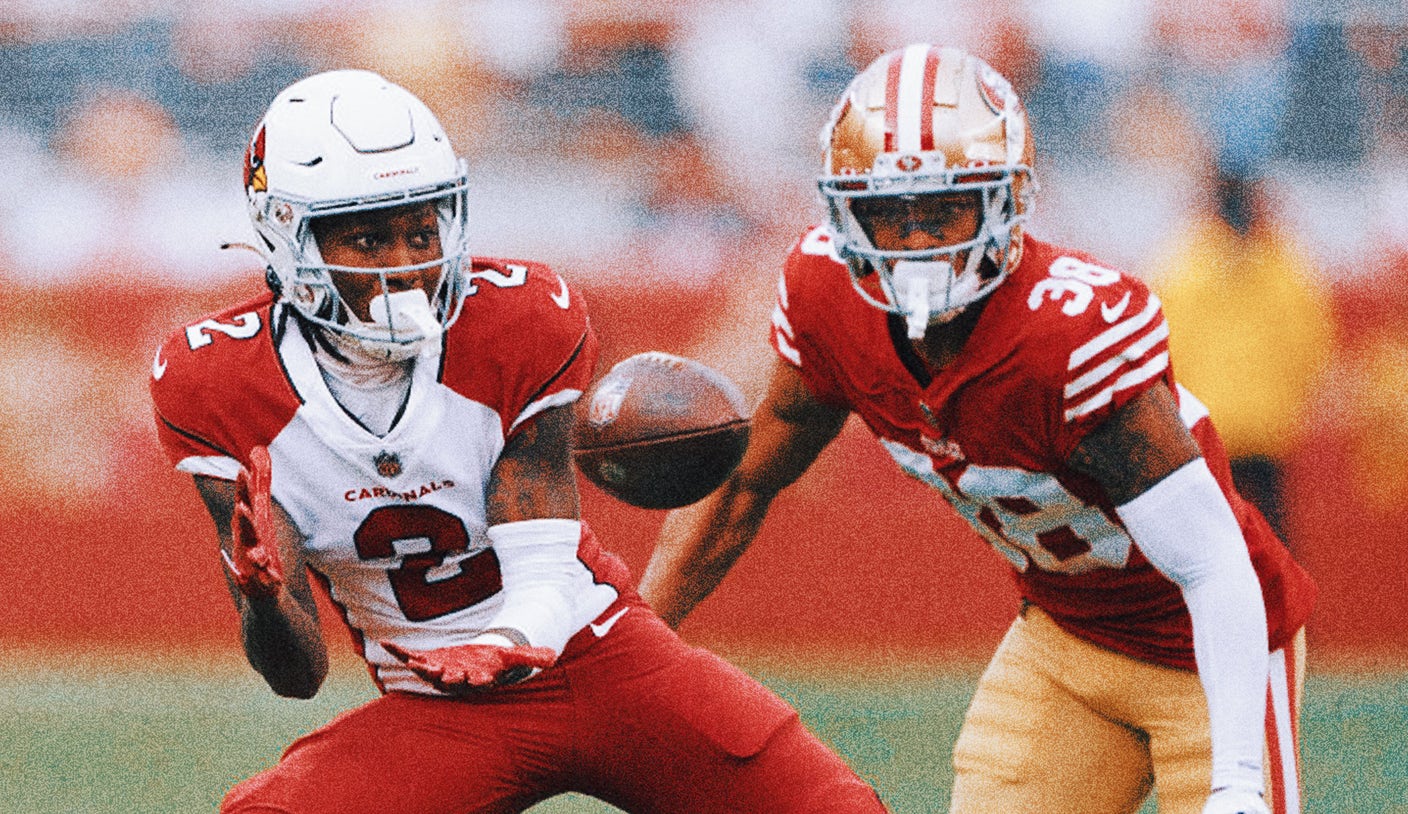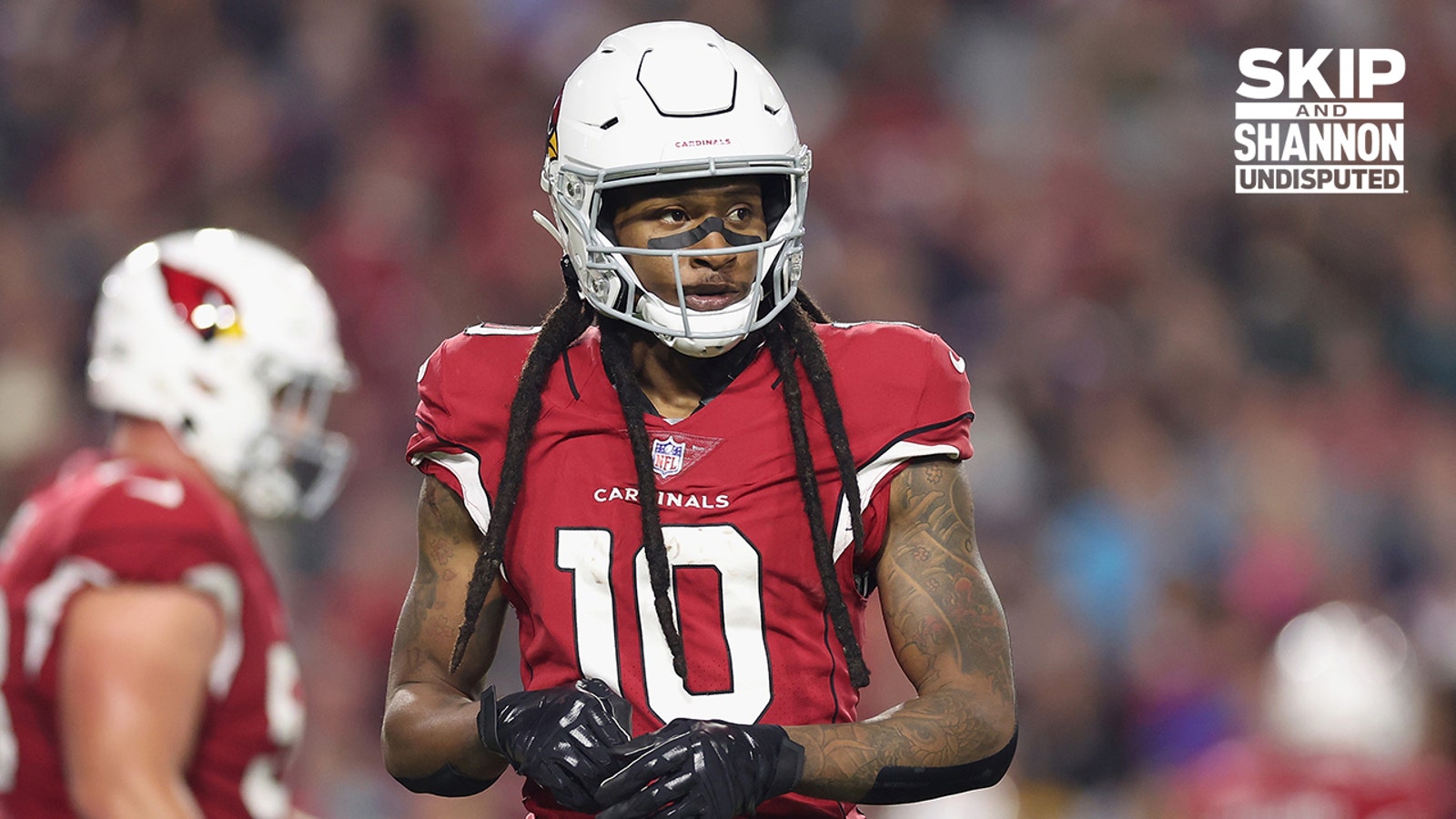[ad_1] Eric Williams NFC West Writer Despite what new Arizona Cardinals coach Jonathan Gannon said publicly, the expectation had likely always b
[ad_1]
Despite what new Arizona Cardinals coach Jonathan Gannon said publicly, the expectation had likely always been that DeAndre Hopkins would play elsewhere in 2023. Arizona finally released Hopkins last week after failing to find a trade partner, giving the veteran receiver the option to play wherever he wants for the upcoming season.
Hopkins, who turns 31 on Tuesday, was scheduled to make $19.45 million for the upcoming season, making it harder for the Cardinals to move him to another team.
The Cardinals are now tasked with figuring out how to replace the 221 receptions for 2,696 receiving yards and 17 touchdowns Hopkins compiled over three seasons.
While Hopkins provided some memorable moments during his time in Arizona, his availability was spotty. He missed eight games in the 2021 season — including his team’s postseason loss to the Los Angeles Rams — with a hamstring issue and an MCL knee injury that required offseason surgery.
Hopkins was suspended the first six games of the 2022 regular season for violating the NFL’s performance-enhancing drugs policy and did not play the final two games of last season because of a knee issue.
Gannon said it will be a group effort to fill the void.
“I’m not really looking to replace D-Hop,” Gannon recently told reporters. “What I’m looking for is us to play winning football together as a team. That’s not just the receiver room. That’s the tight end group, the O-line room, the quarterback group, the running back group, the defense, special teams, the kicking. Football is never about one guy. It never has been or never will be. And we all got to pull our weight.”
While one person likely will not replace Hopkins’ leadership, production and unique skill set, Marquise “Hollywood” Brown is the next man up to assume the role of No. 1 receiver for the Cardinals.
Kyler Murray‘s teammate and good friend at Oklahoma, Brown came to the Cardinals last year in a draft-day trade. The speedy receiver had an up-and-down first run with the team, totaling 67 catches for 709 receiving yards and three scores. He missed five games with a foot injury and his 10.6 yards per reception was the worst of his career.
At 5-foot-9 and 180 pounds, the 26-year-old Brown does not possess Hopkins’ ability to win contested catches, particularly in the red zone. But Brown can stretch the field with his elite speed, and he should be better at creating chunk plays for Arizona’s offense if fully healthy.
Entering the final year of his rookie deal and scheduled to earn $13.4 million in total compensation, Brown should be properly motivated to put together the type of production expected from a No. 1 receiver, showing he deserves a new contract with the Cardinals or elsewhere.
One of the reasons Brown sought a trade from the Baltimore Ravens was to find an offense that targeted wide receivers more. He should get that opportunity this year.
By releasing Hopkins before the June 1 deadline, the Cardinals absorbed a $22.6 million dead cap hit on the 2023 books. The Cardinals are projected to have $46 million in salary cap space in 2024, which would give them the ability to retain a potential foundational player like Brown.
Another way Arizona can fill the void of Hopkins’ absence is by creating balance on offense by running the football more. New offensive coordinator Drew Petzing worked as the quarterbacks coach for the Cleveland Browns last season. With the running back duo of Nick Chubb and Kareem Hunt, the Browns finished No. 6 in the NFL in rushing with 2,460 yards. The Cardinals were No. 22 in rushing last year, totaling 1,873 yards.
“We’ve been seeing some Cleveland film with Chubb and Hunt,” Arizona lead back James Conner said. “Those are talented guys, but it’s exciting seeing the film and watching those guys get some of those lanes, sometimes getting 10-to-15 yards downfield untouched. So, yeah, it’s exciting. I believe I’m a talented back, and it’s going to be a big year.”
Arizona doesn’t have much size in the team’s top three returning pass-catchers: Rondale Moore (5-foot-7, 180), Greg Dortch (5-foot-7, 175) and Brown. But one receiver who could bring some of the physical tools that Hopkins possesses on the outside is Michael Wilson, the team’s third-round selection out of Stanford.
At 6-foot-2 and 213 pounds, Wilson is a big, strong receiver who can win “combat catches” at the catch point. At the NFL Combine, Wilson ran a 4.58 40, posted a 37-inch vertical jump and benched pressed 225 pounds a jaw-dropping 23 times.
He also had an impressive week at the Senior Bowl. However, Wilson dropped to the third round because he had trouble staying healthy at Stanford, missing extensive time due to injury.
“Obviously, they brought me here to make an impact in some way, shape or form,” Wilson said during his introductory press conference. “If that’s being a starting receiver, that’s great. If that’s being a special teams guy, that’s great. If that’s being a backup receiver, special teams guy in a gunner role — whatever role I carve out for myself, it’s going to be completely dependent on what I do on the practice field and how I carry myself in the meeting room.”
Whether it’s feeding the ball to Brown, handing the ball to Conner or Wilson earning touches, Arizona’s offense will look much different with Hopkins no longer on the roster.
“We talk about with our guys: ‘If you carve out a role for yourself, we will use you in that role,’” Gannon said.
Eric D. Williams has reported on the NFL for more than a decade, covering the Los Angeles Rams for Sports Illustrated, the Los Angeles Chargers for ESPN and the Seattle Seahawks for the Tacoma News Tribune. Follow him on Twitter at @eric_d_williams.

Get more from National Football League Follow your favorites to get information about games, news and more
[ad_2]
Source link




COMMENTS